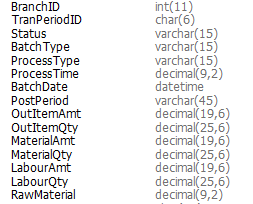Hi all,
This is a custom screen with a custom DAC and table.
I keep getting an error after I have inserted a row on a custom field.
Error: An error occurred during processing of the field RawMaterial: Result set index too big..I have a few decimal fields on the DAC:
#region LabourQty
[PXDBDecimal()]
[PXDefault(TypeCode.Decimal,"0.0")]
[PXUIField(DisplayName = "LabourQty", Enabled = false)]
public virtual Decimal? LabourQty { get; set; }
public abstract class labourQty : PX.Data.BQL.BqlDecimal.Field<labourQty> { }
#endregion
#region RawMaterial
[PXDBDecimal()]
[PXDefault(TypeCode.Decimal,"0.0")]
[PXUIField(DisplayName = "RawMaterial", Enabled = false)]
public virtual Decimal? RawMaterial { get; set; }
public abstract class rawMaterial : PX.Data.BQL.BqlDecimal.Field<rawMaterial> { }
#endregionBut for some reason I only get the error on the RawMaterial field every time after a row is inserted.
The actual value is either 0.00 or 1.0 which wouldn’t normally throw such an exception.
I have also tried changing the the field type from Decimal(26,6) to Decimal(9,2) but still the same result.
Any help would be greatly appreciated.





